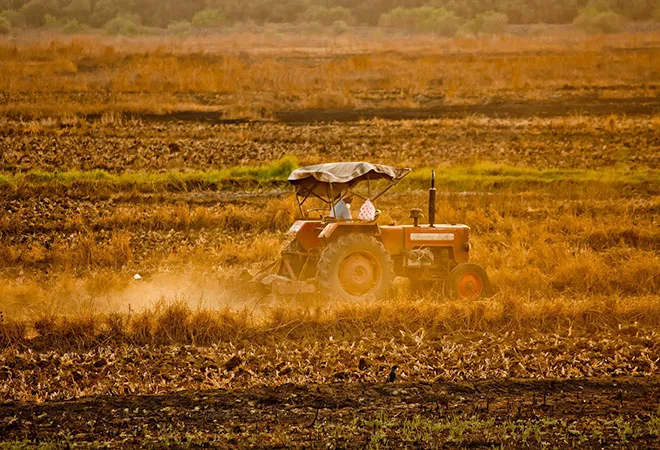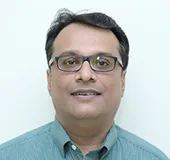-
CENTRES
Progammes & Centres
Location
Is the economic model effective to tackle poverty?

The penchant of Prime Minister Narendra Modi for inventing catchy acronyms for the central government schemes has finally caught up with the principal opposition party, the Congress, also. It has unveiled a minimum income guarantee scheme for the poor and named it NYAY (Nyunatam Aay Yojana). Rahul Gandhi has called it “the surgical strike on poverty” in a clear attempt to pose an economic narrative against the national security narrative of the incumbent government.
However, the scheme (as described till now) gives rise to some uncomfortable questions.
While launching the contour of NYAY, various Congress leaders said that the monthly income of poorest 20 percent Indian families is around INR 6,000 on average, and the scheme will support these families with another INR 6,000 per month so that the average income of such families become a monthly INR 12,000 (or an annual INR 144,000). This, according to the Congress, will benefit around 25 crore people belonging to the poorest five crore families in the country.
Both the definitions of the Congress and the BJP for “poor family” and “economically backward person” respectively do not match with the current official “poverty line” income levels.
While hurriedly passing the Constitutional Amendment Bill in January 2019 to facilitate future 10 percent reservation for economically weaker sections of the population (seemingly general category), the current BJP-led government conveyed that people earning less than INR 8 lakh annually (or, around INR 66,667 monthly) will be identified as “economically backward.” The text of the bill, however, does not contain any explicit income criteria.
Both the definitions of the Congress and the BJP for “poor family” and “economically backward person” respectively do not match with the current official “poverty line” income levels. The Suresh Tendulkar Committee Report’s recommendations were earlier used to estimate poverty in 2009-10 and 2011-12, and the benchmark was set at daily income of INR 27 for rural India and INR 33 for urban India. Later, the Rangarajan Committee Report was submitted in 2014, and it has revised the benchmark poverty income levels at daily income of INR 32 in rural areas and INR 47 in urban areas, or annual income of INR 11,520 in rural areas and INR 16,920 in urban areas.
These poverty (or economic backwardness) benchmarks, in no way, match with the criteria set by the two major national parties of the country.
What will be the number of “poor” and “economically backward” population in the country if the income criteria are set at INR 72,000 and INR 800,000 annually instead of a paltry INR 16,920 or INR 11,520? If voted to power this time, are these parties going to change the definition of poverty income lines?
Why did these political parties not change the benchmark income criteria in defining “the poor” when they had the opportunity to do so? What will be the number of “poor” and “economically backward” population in the country if the income criteria are set at INR 72,000 and INR 800,000 annually instead of a paltry INR 16,920 or INR 11,520? If voted to power this time, are these parties going to change the definition of poverty income lines?
That is the first set of questions a common citizen and voter should ask ideally.
Minimum Income Guarantee (or Universal Basic Income) has caught the fancy of the economists as the 20th century expectation of lifting the basic living standards above poverty level remained unfulfilled across the world. Poverty refused to fade from many countries in Asia, Africa and Latin America, while income inequality exacerbated the problem further.
Trends in Gini Index across different countries (Table 1) corroborate this stylised fact. Gini Index measures the extent to which the income distribution in a country deviates from a perfectly equal distribution. A Gini Index of 0 represents perfect equality, while an index of 100 implies perfect inequality.

Scandinavian countries typically show relatively lower income inequality, while some of the advanced first world economies like the United States show high prevalence of inequality. Latin American countries, on the other hand, generally show very high amount of inequality prevailing in their economy. That contributes substantially to the social and political instability in the continent as well.
In India, the index deteriorated like many other countries, and non-availability of this benchmark inequality estimate after 2011 also bears testimony of the existing policy apathy in eradicating poverty and inequality.

The share of different income groups in India in the total income growth between 1980 and 2015 (Table 2) portray this clearly. One look at the top 10 percent group’s share in income growth shows the extent of lopsided income growth in the country. Adjusted with inflation in this 35-year time period, this implies relative fall in the income level for the bottom 50 percent of the population.
From Figure 1, it can be observed that top 1 percent income group’s share in national income was at 13 percent in 1922-23, it increased to 20.7 percent in 1939-40 at the beginning of Second World War, and then decreased to 10.3 percent in 1949-50 before spectacularly rising once again to 21.3 percent in 2014-15 (crossing the pre-independence level).
This damning trend in top 1 percent’s growth in income directly relates to the prevalence of poverty in the country, which refuses to fade away.

This brings us to the second set of ‘just’ questions needed to be asked.
Is the economic model (which took back the top 1 percent’s income share to the pre-independence level) effective to tackle poverty? As there is no difference of opinion among the Congress and the BJP about the current economic model, how do both the parties plan to address this huge amount of inequality which in turn contributes to the prevalence of poverty?
While talking about NYAY, the Congress manifesto plays it safe by mentioning that cash transfer would be done “without in any way affecting the goal of fiscal prudence.” This may imply cutting down budgets of some other social welfare programmes — if we go by the tendency of the past central governments since 1991.
Therefore, it is relevant to ask here — whether this growing income share of top 1 percent will be taxed or not? If not, then what are the alternative plans to mobilise resources for this scheme?
However, the ballpark estimate of INR 3.6 lakh crore to implement NYAY indicates that the cost is not the major problem. But since this scheme is not universal and intends to target a certain income group to transfer the benefits — identification of poor becomes important. And there lies a plethora of issues.
It is relevant to ask here — whether the growing income share of top 1 percent will be taxed or not? If not, then what are the alternative plans to mobilise resources for this scheme?
Given the facts that around 90 percent of Indian work force is engaged in informal sector and do not have a steady flow of income, identification looks a tall order. For an annual transfer, real-time data on income needs to be collected, processed and published. Contrast this with the other fact that parts of the Census 2011 data are yet to be published, the statistical process of identification of poor for NYAY seems to be an improbable task.
Even if one assumes that such statistical exercise is undertaken, it will cost a substantial amount of money. While undertaking frequent income census of the entire population is highly desirable for the research and policy making purpose, realistically the costs of undertaking such periodic surveys will be humongous. A similar recent example can be found in the UK, where the government is planning to undertake a review exercise costing a whopping £3.7 billion to check whether disability benefit claims are reaching their intended recipients. That amount is sufficient to run a universal basic income programme in an average town of the UK for more than 8 years. Even in India’s case, the money used in identifying poor can be used for real poverty eradication.
Too much faith is often expressed in the JAM trinity (Jan Dhan, Aadhaar, Mobile) in implementation of any welfare scheme now-a-days, while there have been instances where this trinity has been unable to effectively transfer the benefits to the intended recipients. On the contrary, criticisms of exclusion are forwarded wherever this technology trinity failed to work.
Instead, another trinity of universal employment guarantee (by extending the existing one in urban areas), universal basic services (including health and education), and universal non-contributory pension (to the elderly and the people with disability) has the potential to undertake a more effective “surgical strike on poverty.” According to economists like Jayati Ghosh, because of the self-selection process involved here this trinity has the potential to generate much better quality of life without creating any unwarranted inclusion or unjustified exclusion. This can also create significant multiplier effects which can accelerate economic activities across the sectors in the economy — generating more revenue even for the government. Total costs to implement these programmes are estimated to be around three times that of NYAY, but the positive repercussions will be much more widespread across the population.
Is Congress interested in implementing such all-encompassing schemes to reduce poverty? That should be the last ‘just’ question to be asked by a voter — for the time being.
The views expressed above belong to the author(s). ORF research and analyses now available on Telegram! Click here to access our curated content — blogs, longforms and interviews.

Abhijit was Senior Fellow with ORFs Economy and Growth Programme. His main areas of research include macroeconomics and public policy with core research areas in ...
Read More +